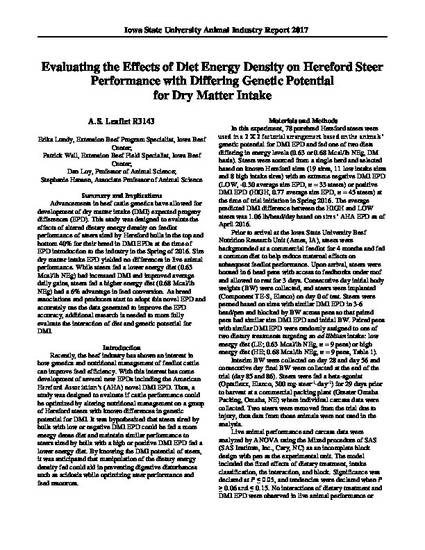
Advancements in beef cattle genetics have allowed for development of dry matter intake (DMI) expected progeny differences (EPD). This study was designed to evalute the effects of altered dietary energy density on feedlot performance of steers sired by Hereford bulls in the top and bottom 40% for their breed in DMI EPDs at the time of EPD introduction to the industry in the Spring of 2016. Sire dry matter intake EPD yielded no differences in live animal performance. While steers fed a lower energy diet (0.63 Mcal/lb NEg) had increased DMI and improved average daily gains, steers fed a higher energy diet (0.68 Mcal/lb NEg) had a 6% advantage in feed conversion. As breed associations and producers start to adopt this novel EPD and accurately use the data generated to improve the EPD accuracy, additional research is needed to more fully evaluate the interaction of diet and genetic potential for DMI.
Available at: http://works.bepress.com/stephanie_hansen/29/
